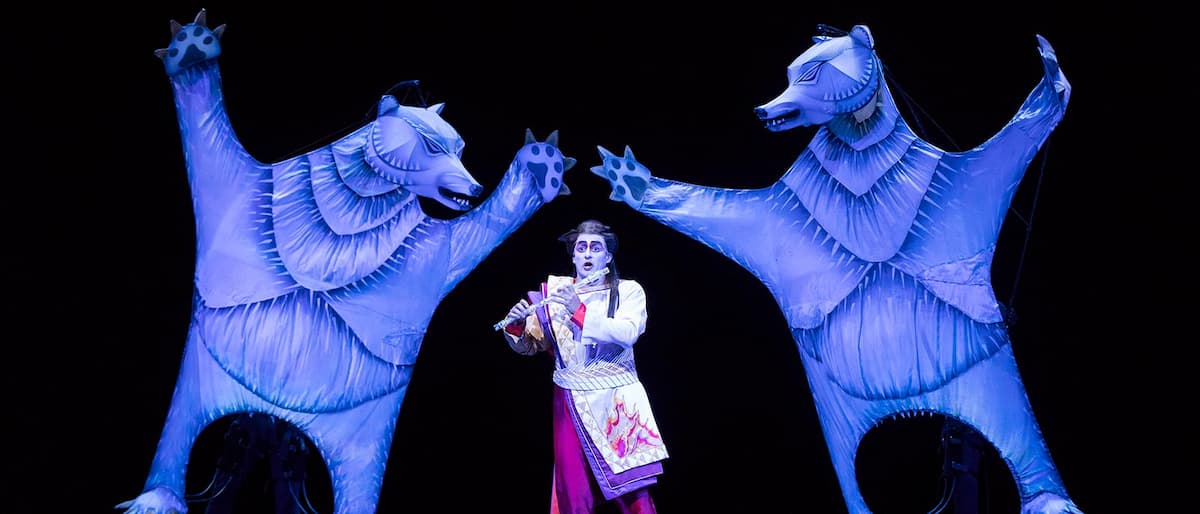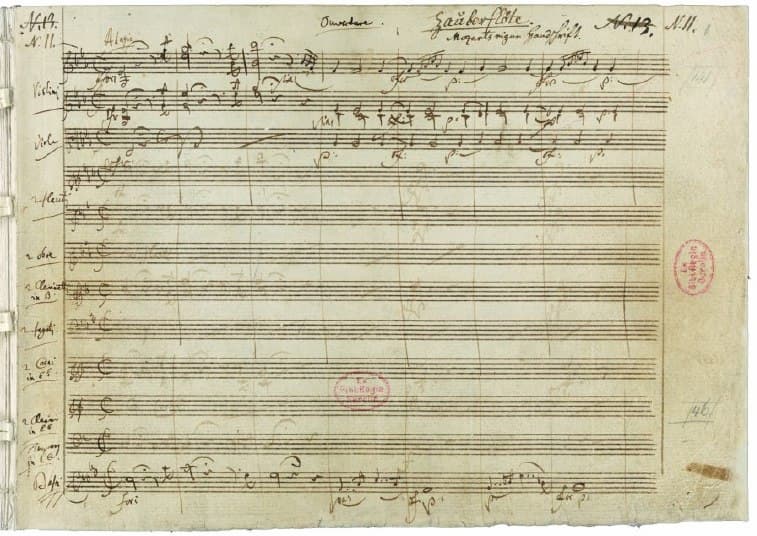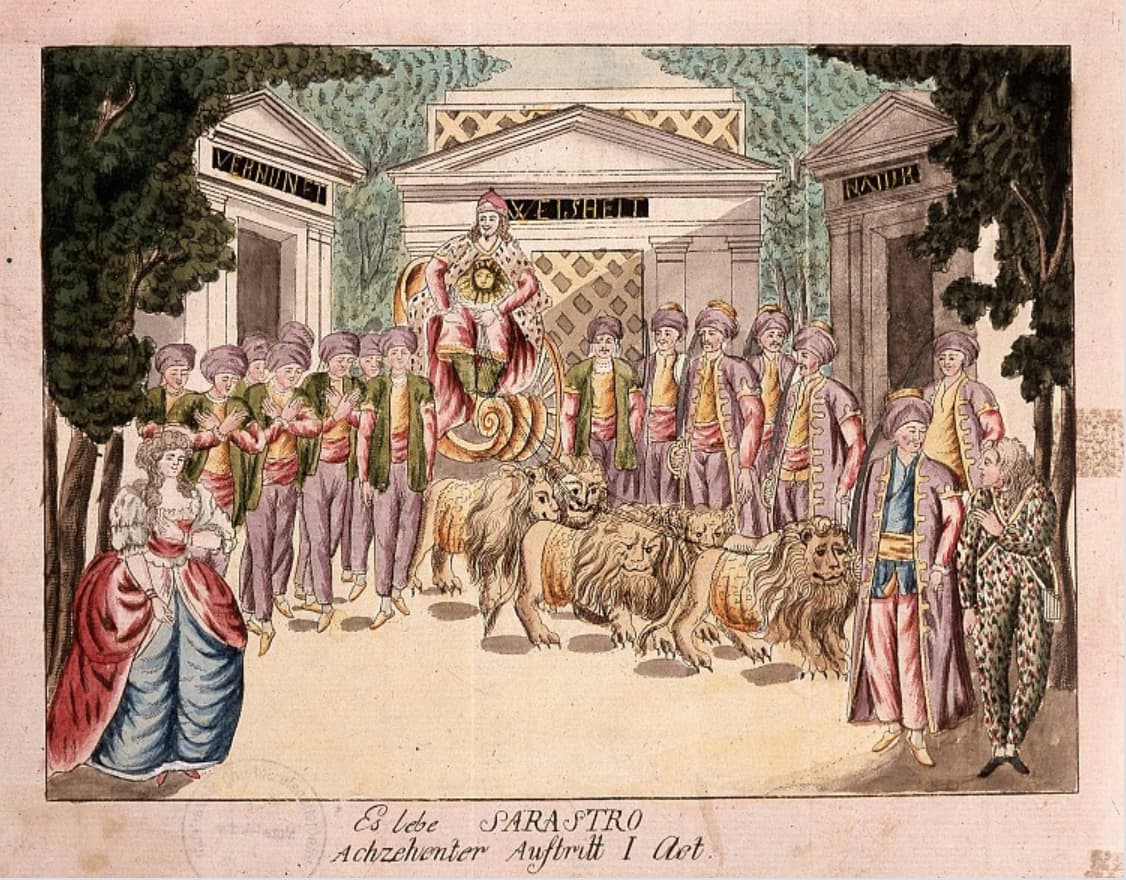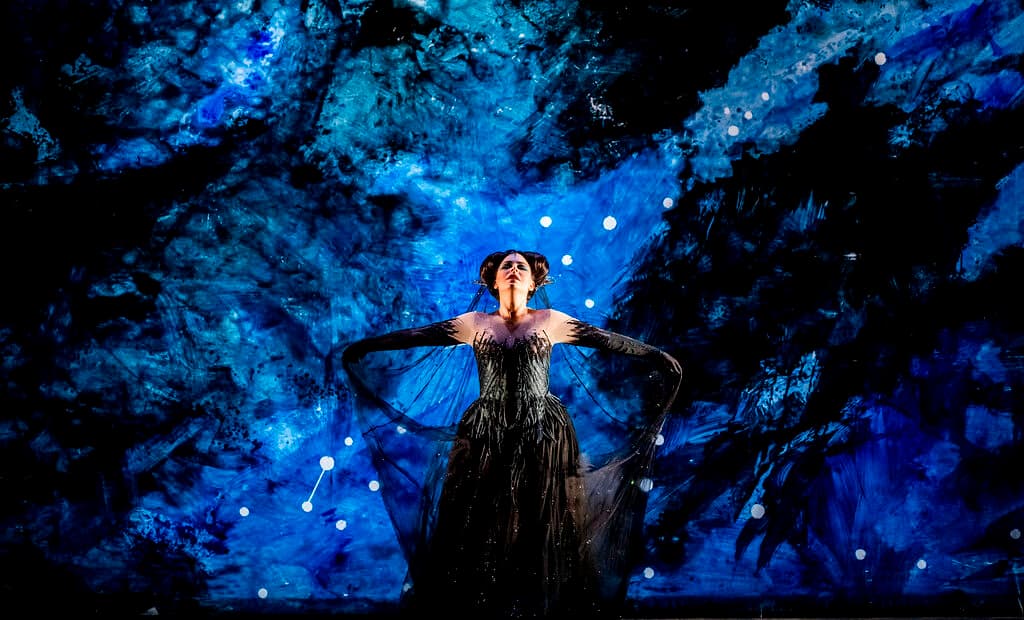The Theater auf der Wieden, located in the then-suburban Wieden district of Vienna existed only for 14 years, between 1787 and 1801. For most of this period, the director of the theater was the German impresario, dramatist, actor, singer, and composer Emanual Schikaneder. He staged the premieres of no fewer than 350 theatrical works in this venue, including the celebrated Magic Flute by Mozart on 30 September 1791.
Wolfgang Amadeus Mozart: The Magic Flute, “Overture”
The Source

Mozart’s The Magic Flute © The MET
Scholars are quick to assert that the libretto of Mozart’s opera The Magic Flute is not a text of high literary distinction. It might be safe to assume that the two-act play, written by Schikaneder would long be forgotten had not Mozart’s music kept it alive. A particularly harsh assessment states, “The language of the dialogue is, for the most part, a ludicrous mixture of theatrical commonplaces and trivial jests, while the versified portions are the clumsiest doggerel, relieved occasionally by passages borrowed from popular masonic songs.”
The libretto is based on a variety of different sources, drawing on essays detailing the mysteries of the Egyptians, heroic and chivalric poems and novels, aspects of fairy tales, and the influence of Freemasonry. Latest research suggests that Schikaneder might not have been the only author of the libretto, with Johann Georg Metzler, who called himself Carl Ludwig Gieseke, identified as a possible collaborator.
Wolfgang Amadeus Mozart: The Magic Flute, “Dies Bildnis ist bezaubernd schön”
The Libretto

Mozart’s autograph score
The French novelist Stendhal writes, “The libretto conforms to that degree of charming extravagance and light, amusing fantasy which comes so easily to any French writer in search of a facile popularity; but, as we maintained so often, this type of writing may often be ideal for the requirements of music. Music holds the secret of transforming even the cheap fancies of the most vulgar imagination into conceptions of noble grace and individual genius.”
The libretto is a bewildering piece of literature, at best a rich source of folklore and popular enlightenment, at its worst an unoriginal patchwork of disparate scenes and motives, “hastily strung together and modishly designed for instant success.” We do know, however, that Mozart was delighted with this libretto, and even Goethe admired it so much that he attempted to write a sequel.
Wolfgang Amadeus Mozart: The Magic Flute, “Bei Männern, welche Liebe fühlen”
The Premiere

Arrival of Sarastro on a chariot pulled by lions, from a 1793 production in Brno.
Mozart composed the music of the “March of Priests” and the “Overture” on 28 September 1791, a mere two days before the première. He personally directed that first performance “with his friend Süßmayr sitting on his right and diligently turning the pages of the score.” Clearly, Mozart was sitting at a keyboard instrument and playing along with the orchestra, a fairly standard practice for conductors in Mozart’s time. We do know that Mozart conducted only the first two performances, subsequently turning over direction to the regular leader Johann Baptist Henneberg.
There are no reviews of the first performance, but it was immediately clear that Mozart and Schikaneder had scored a tremendous hit. The opera was drawing immense crowds, and over 100 performances were given in its first year alone, 223 over the life of the theatre. Mozart’s delight is reflected in three letters written to Constanze, who was visiting her sister during this time. He writes, “I have this moment returned from the opera, which was as full as ever, listening the number that had to be encored.”
Wolfgang Amadeus Mozart: The Magic Flute, “Der Hölle Rache”
Legacy

© Royal Opera House
Mozart wrote to Constanze on 7 October, “what always gives me the most pleasure is the silent approval! You can see how this opera is becoming more and more esteemed.” To be sure, Mozart went to hear his opera almost every night, taking along friends and relatives. With 20 performances given in October 1791 alone, the first extracts from the opera were published in November. After Mozart’s death, the opera quickly played in Prague, Warsaw, and St Petersburg.
The first translation in Dutch dates from 1799, followed by editions in Russian and French from 1801. The first performances in England, in 1811, used an Italian translation, and the English version appeared in London and New York in 1833. To be sure, The Magic Flute quickly reached an international audience, and its popularity has never waned. A scholar writes, “The Magic Flute has the greatest variety of orchestral color that the eighteenth century was to know, and the economy of each musical effect is concentrated to reveal a single dramatic stroke of genius.”
For more of the best in classical music, sign up for our E-Newsletter
